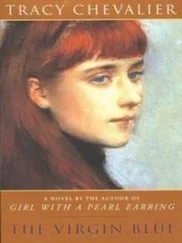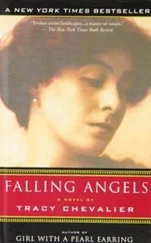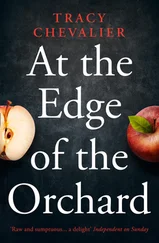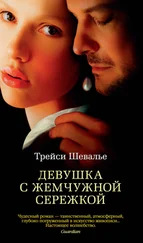“Not that I know of-but I wouldn’t put it past them! They could have gone up there just after us, and arrived back today and be on the Columbus tomorrow, same as us.” Clearly it was a matter of honor for Lobb to land sequoias on English soil first.
Given how casually they had handled the cones while collecting them at Calaveras Grove, William Lobb was unexpectedly fastidious about packing them. “The success of plant collecting lies primarily in the packing,” he proclaimed. “Doesn’t matter what you’ve collected if it arrives in England dead or rotten.”
First they padded the lead-lined tin cases with old newspaper Mrs. Bienenstock had saved for them. Then they put in the sequoia cones. Robert would have dumped them in by the handful, but Lobb placed each cone until they made an even layer, then put another layer on top of those, and another layer. When the box was full, he took a sack of sand he’d dug up from a beach and kept in his room, and poured it into the box so that it filled all the spaces between the cones. “Absorbs damp,” he explained. “These cases’ll be around water for a few months. If the seeds get damp they’ll rot or germinate. Can’t have that.” Finally they sealed the cases with wax.
William Lobb decided the seedlings must be shipped in a Ward’s case, and brought the wood and glass materials into the yard to build a small one. If it was constructed properly any plants inside were protected from wind and sea spray and could be brought on the ship deck to get some sun. They filled the bottom of the case with soil, then planted the sequoia seedlings, as well as a few other plants Lobb had growing. They watered them, then shut the glass lid. The Ward’s case would not be opened again until it reached England.
Robert puzzled over this for some time. “How do they stay moist?” he finally asked as William Lobb dripped a lighted candle along the seams of the case.
“Condensation,” Lobb replied without looking up. “The water can’t escape through evaporation, so it remains in the case. A plant can live months in a Ward’s case, as long as it doesn’t get smashed. It’s people who are more likely to damage the plants than anything else. I once had specimens survive in Ward’s cases all the way from Brazil, only to die from being left too long in the cold on a London dock. Seeds are always a better bet, as long as they don’t germinate.”
The next day Robert and William Lobb took their cargo down to Pacific Wharf, where the Columbus was docked. It would steam to Panama City, then the cargo would be carried by wagon across the Panama Isthmus to Aspinwall, where another steamship would head up through the Caribbean to New York. There the cases would be transferred to a ship bound for Southampton, on the south coast of England. In all the trip would take two to three months.
Once they had stowed the Ward’s case and the tin cases down in the hold and were back on deck, William Lobb took out his pipe, filled it with tobacco, tamped it down and lit it. “Go and get anything still in the wagon, would you, lad? I’ve got my hands full.”
Robert thought they had brought everything but he went back as directed. On the wagon bed he found a leather trunk with a brass plate fixed to one side, the initials WL engraved on it. He ran his finger over the letters and frowned. Shouldering the trunk, he hauled it on board.
William Lobb was standing in the doorway of a cabin, and gestured for Robert to put the trunk at the foot of the bed. When he straightened, Robert looked at his employer puffing away on his pipe.
“Aren’t you coming back to Mrs. Bienenstock’s?” he said at last, since it looked as if William Lobb wasn’t going to speak.
“No, Robert.” It was one of the few times since they had met that Lobb used his name. “I’m going back to England. I’m not expected for another year, and Veitch’ll be surprised to see me. But this is the most exciting find since the monkey puzzle. He’ll never believe me about the size of those sequoias unless I describe them to him face to face, and show him my drawings. In a letter he’ll just think I’m exaggerating. This way I’ll get a chance to look after the Ward’s case, make sure it gets out into sunlight now and then, and doesn’t get smashed or abandoned.”
“But-”
“Mrs. B. will set you straight. Now, I’ve got a thing or two to settle with the captain. They always try to shortchange me on fresh water. See you in a year or two, if the sea doesn’t get me, or a grizzly bear you!” With those words William Lobb strode away, leaving Robert standing lost on deck.
He did not wait for the steamship to set out, but walked in a daze back to the boardinghouse. He had assumed that once the Columbus sailed, he and William Lobb would saddle their horses and ride south towards the mountains around Monterey, where Lobb would teach him about pines. Now he had to discard that dream. All he wanted to do was saddle up the gray and ride away-away from the boardinghouse and San Francisco, away from redwoods and sequoias, away from the Monterey and ponderosa and bristlecone pines he’d hoped William Lobb would show him. The problem was, you couldn’t go west of California, and Robert had never run anywhere but west.
In his room he packed his few things. But when he went to settle up with Mrs. Bienenstock, who was in the kitchen grinding coffee beans in a hand mill, she shook her head and he knew William Lobb had paid it. More than that: she had money for him, and instructions. “You take his room, long as you don’t mind how small and dark it is,” she said. “Not so bad now those cases are gone. I’m supposed to pay you. You can have it all now, or regular like a salary. Which do you want?”
Robert stared at her, unable to speak. Mrs. B. shook her head again and turned the handle faster. “We better make it regular.” When he didn’t move, she added, “Come on, man. Time to paddle your own canoe. Go on, put your things in there. I’ll get you some fresh sheets.” As Robert went to obey her, he thought he heard her chuckle.
William Lobb had left his room neat and empty apart from a stack of brown leather notebooks and a letter. The notebooks were similar to the one Lobb had used at Calaveras Grove. That notebook full of sequoia drawings was gone now, of course: Lobb would have taken it with him back to England to show to his employer. But the other notebooks were full of everything he needed to know about California conifers.
He opened the letter-the first he had ever received. It consisted mostly of a list.
September 13, 1853
Goodenough-
Please collect the following:
5 sacks each of
Pinus radiata
,
muricata
,
ponderosa
and
attenuata
+ 3 seedlings each
3 of
Abies bracteata
+ 3 seedlings
10 of giant sequoias + 5 seedlings
4 of
Sequoia sempervirens
+ 5 seedlings
3 of
Pinus lambertiana
+ 3 seedlings
5 each of
Abies grandis
,
procera
,
magnifica
and
concolor
+ 3 seedlings
I have marked on the enclosed map where best to find them. Many you can collect near San Francisco or Monterey, but for the last listed you will need to go far north to the Oregon mountains and bring the cones back by ship to San Francisco.
Send all consignments to
William Lobb Esq
Veitch and Sons’ Exotic Nursery
Mount Radford
Читать дальше
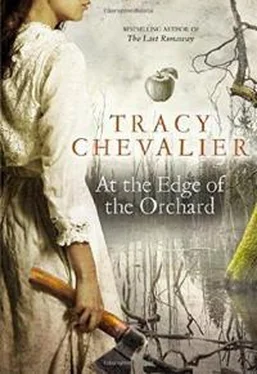

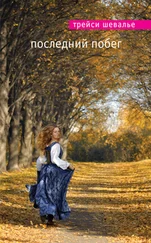
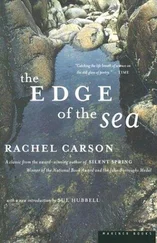
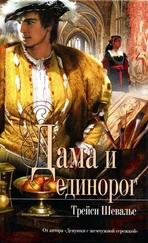
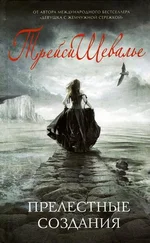
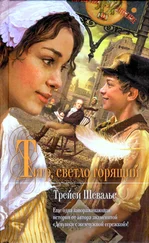
![Трейси Шевалье - Тонкая нить [Литрес]](/books/386177/trejsi-shevale-tonkaya-nit-litres-thumb.webp)
